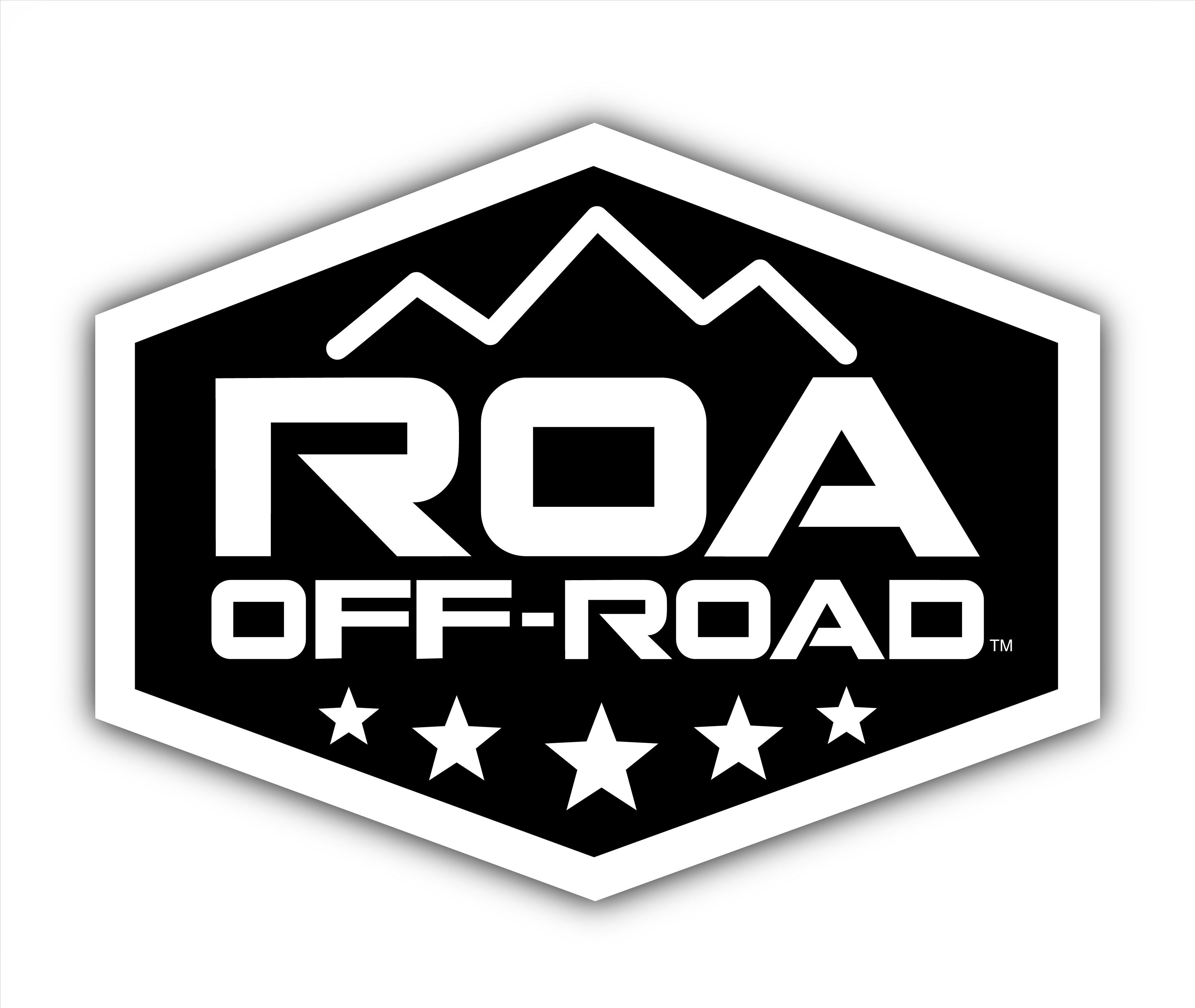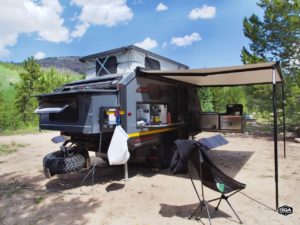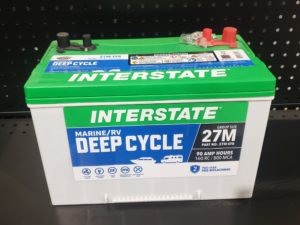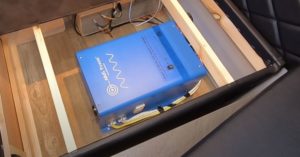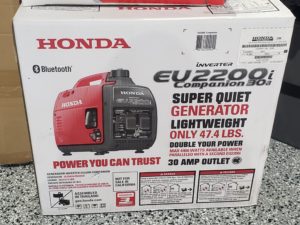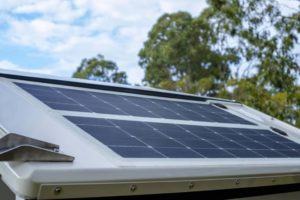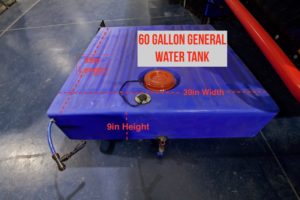Off The Grid: The Ultimate Guide To Dry Camping
Dry Camping/Boondocking Upgrades
When you hear talk among avid RVers of “dry camping” or “boondocking”, They’re talking about camping without the water and power hookups you get at KOA-style campgrounds. It is camping off road and off grid, in the truest sense, or in other words, “roughin’ it”! Serious campers will go nuts with aftermarket add-ons and upgrades to extend their time in the wilderness! Inverters, solar panels, generators and whatever else they can get their hands on.
Since the aim of all the upgrades is to lengthen the amount of time you could disappear for. So, anything that can be done to increase the amount of power, water, and capacity in your holding tanks that you have, means more time adventuring. Let’s be honest here. None of us really want our adventures to end, do we?
There are two main avenues when it comes to upgrading your rig. There are off-the-shelf products that ready to be bought and jimmy-rigged, (DIY solutions), for those brave enough to make modifications to their own RVs. The other option is to take your camper to the ones who are trained to upgrade your trailer. People like ROA OFF-RAOD who can help you stay off grid longer.
Here’s a Run-Down of Popular Options
Power
Power in an RV or trailer comes from a 12-volt battery system similar to the automotive setup in your car. The 12-volt batteries you use, however, won’t be the same starter batteries you would buy for a car. They’ll usually be labeled “marine” when you buy them at the store. In the case of a motorhome there will be two different systems, one for starting the engine and running dashboard features, and one for the lights and appliances inside. We often refer to these two systems as the “chassis” batteries and the “coach” batteries respectively.
When you want to stay off grid, some of the most obvious paths to boosting power and having it last longer is in the batteries themselves. For one, are they fully charged? Do they need to be replaced with some new ones? Some batteries will be advertised as better than others or longer lasting.
For a pretty penny, you could switch to lithium ion batteries. While expensive (with high-amp-hour units running in the thousands of dollars), they do pay themselves off over time. Comparing dollar per amp-hour between lead-acid and lithium batteries, lithium batteries will end up costing you only a third what lead acid will, because you’ll go far longer between needing to replace them. Having these batteries means you can extend your off-roading adventure.
– – –
Other Advantages to Lithium
You can “draw” more out of them, kind of like a deep cycle battery. With lead-acid you may only be able to “tap” into 50-80% of the actual capacity.
You get dozens of additional charges out of them.
Longer cycle life.
Lithium charges faster and more efficiently.
Perform intense, current-heavy tasks better.
Much smaller and lighter.
Ideal for solar systems for a myriad of reasons. (How easy they charge for example).
Lithium is pricey though so maybe you can’t buy them just yet. If not, then deep cycle batteries are a great second choice.
– – –
Deep Cycle Batteries
A lead-acid alternative to the lithium route are Deep Cycle Batteries. These 6-volt batteries are most often specified for golf-cart use but when wired in series (for a combined output voltage of 12 volts), they’re a fantastic RV/Marine setup. What you get from 2 Deep-Cycle 6-volt batteries over one of the standard-size 12-volt batteries you’ll buy at the store is, as the term “deep cycle” suggests, a much longer cycle in between charging. The cells in these batteries just allow themselves to be drained “deeper” than the in the shallower 12-volts, if that makes any sense. If there WERE more readily-available deep-cell 12-volt batteries, then we’d be buying those, but because the industry has adopted 6-volt deep-cells, possibly because forklifts and other commercial equipment require 18-volts, that’s what we RV’ers buy!
– – –
Parallel vs. Series Battery Setup
What’s all this talk about series or parallel, you may ask? Good question. Let me explain.
Parallel combines the batteries in such a way that the output is the same, but the system draws current out of both simultaneously, draining them slower and giving you longer battery life. The great thing is that you could “daisy chain” as many 12-volt batteries as you wanted together, 3, 4, 5, etc. without damage to your RV. The only thing that would limit you is space.
Series. Though Parallel can be good, often a more effective setup is usually two deep-cycle 6-volts in series. When wired in Series the voltage of both batteries are combined. Unlike parallel, you could not wire more than 2 6-volt batteries into the mix without damaging your RV. Because of the deep cells of 6-volt batteries, this is actually a superior setup to the parallel 12’s above.
If your rig is big or you just want to make sure you don’t run out for long dry-camping adventures, this is the go-to configuration.
Inverters
I decided to include this section here even though technically inverters won’t GIVE you more power, they allow you to USE the power you already have differently. Your 12-volt battery system uses direct current. Any of the appliances you would bring from home that plug into wall outlet like televisions, dvd-players, phone chargers, vacuum cleaners, and hair dryers all use 110-volt alternating current. Your trailer may have wall sockets to plug these appliances into, but when running off of 12-volt DC power you won’t be able to use them. An inverter is a machine that inverts the DC back to AC so that those outlets supply power. Obviously, that would mean that the inverter is wired into the trailer in a way that may require a professional’s knowledge, but any RV repair center will know how to do it.
You can get inverters in all different sizes, 1000 W, 2000 W, 3000 W…, both online or at larger RV parts stores. If you’ve got a battery system with extra power to spare (because it will drain your batteries quicker while in use), an inverter will allow you to do a lot. Things like charge your phones, let the kids watch TV, and if the inverter is big enough, run the microwave to heat up food. Whether you have a motorhome, a fifth wheel, or an off road camper, having a big battery bank is great, but only when you can use it in the way that you want.
– – –
An Alternative to an Inverter: the Generator
What’s big, heavy, loud, and smells like gas? Maybe your Dad’s generator from childhood? The old generators were all of that to be sure, but luckily today’s generators have come a LONG way. Units from Cummins-Onan, Yamaha, Honda, Generac and more, offer quieter and cleaner power at reasonable prices. You can choose either portable or onboard options. Though to get one that lives in your undercarriage compartment permanently you’ll want a technician, or a few because they’re heavy!
Deciding on how big a generator you’ll need will depend chiefly on how many air conditioning units you want to power off grid. If it’s going to be 2 units, don’t go smaller than 5500 Watts. 5500 watts are the generators that comes factory-installed on Toy Haulers and as optional equipment on larger 5th Wheels and Motorhomes.
If you are looking for something a little lighter, Goal Zero makes a great all-electric “generator.” Basically like a big battery that will charge phones, laptops, tablets and power TVs and whatever else you have that plugs into wall. You can find them in smaller, cheaper variants too. There is always a way to bring a little bit of civilization with you off-roading.
Solar Panels
Have you ever wanted to trek out into the vast frontier of America’s backcountry? I don’t mean just a simple little trip, but a grand adventure. A journey to find your personal Shangri-La. To stay off grid for so long that your neighbors start wondering “what happened to them?” If so, then for sure you’ll want to consider solar battery chargers. I say “solar battery chargers” because the point of solar panels is NOT to power all of your lights and appliances off of the sun directly—they don’t really do that.
Solar panels charge your batteries while the sun shines on them. So, the solar panels aren’t actually powering what you’re using, but putting energy into the batteries where you can then access it. A 4-panel 3000 Watt system with an accompanying battery charging unit and watt-matched inverter will probably run you between $5-8 thousand dollars. You don’t HAVE to go quite that big though.
The huge popularity of RV solar in recent years attests to the fact that passionate outdoor enthusiasts believe the experience is well worth the expense. It’s a technology that’s getting cheaper by the year and is the surest way to thrive “off the grid.”
BOOSTING YOUR TANK CAPACITY IN THE WILD
Black and Gray Tanks
So, now you’ve got power for days, but what are you going to do when that septic tank fills to capacity? Fun’s over, right?
It’s true that if you’ve got small holding tanks, you are limited to how long you can be out between dumping, but for those that just HAVE to go those extra few days off grid, external holding tanks are an option. Basically, as your holding tanks get full, you can empty them into this “extra” tank so your holding tanks have more room. Be careful what happens to that tank… you know what’s in it! You’ll empty it at a dump site at the same time that you empty the holding tanks on your RV. Some great options include the Thetford SmartTote tanks that roll around on wheels easily to the nearest dump site and will even tow behind a vehicle.
– – –
Fresh Water Tank
To have more water while camping off grid, you’ll just need to bring more from home! Bringing large packs of water bottles or large coolers of drinking water can alleviate your need for water from the trailer tap and limit its use to cleaning and washing. You could also think about getting a large exterior water tank. There are many on the market with RV purposes in mind, like the holding tanks for the bed of your truck or auxiliary vehicle. It’s hard for me to imagine many scenarios where you’ll need THAT much water being away from civilization THAT long, but for convenience sake you can hook one of these up to your water filter like this blog article shows:
http://www.doityourselfrv.com/1-easy-trick-boost-rvs-freshwater-tank-capacity/
On the other hand, if you plan to camp near natural sources of water, make sure to research and select the right water filtration system for your needs.
Conclusion
No matter what off road trailer you have, a Xplore, a Dweller, a ROAMER, a Bruder or something else, there are ways to lengthen your off grid adventures. Whether it be by upgrading to lithium batteries or increasing the capacity of your tanks, there is always something that can be done. This beautiful world awaits, so get out there an see it!
Check out one of the exclusive off road camper dealers: ROA OFF-ROAD
Check out some awesome off road caravan videos: https://www.youtube.com/@ROAOffRoad
Talk to the people who can help you get into the perfect camper for your needs: 801-860-0035
